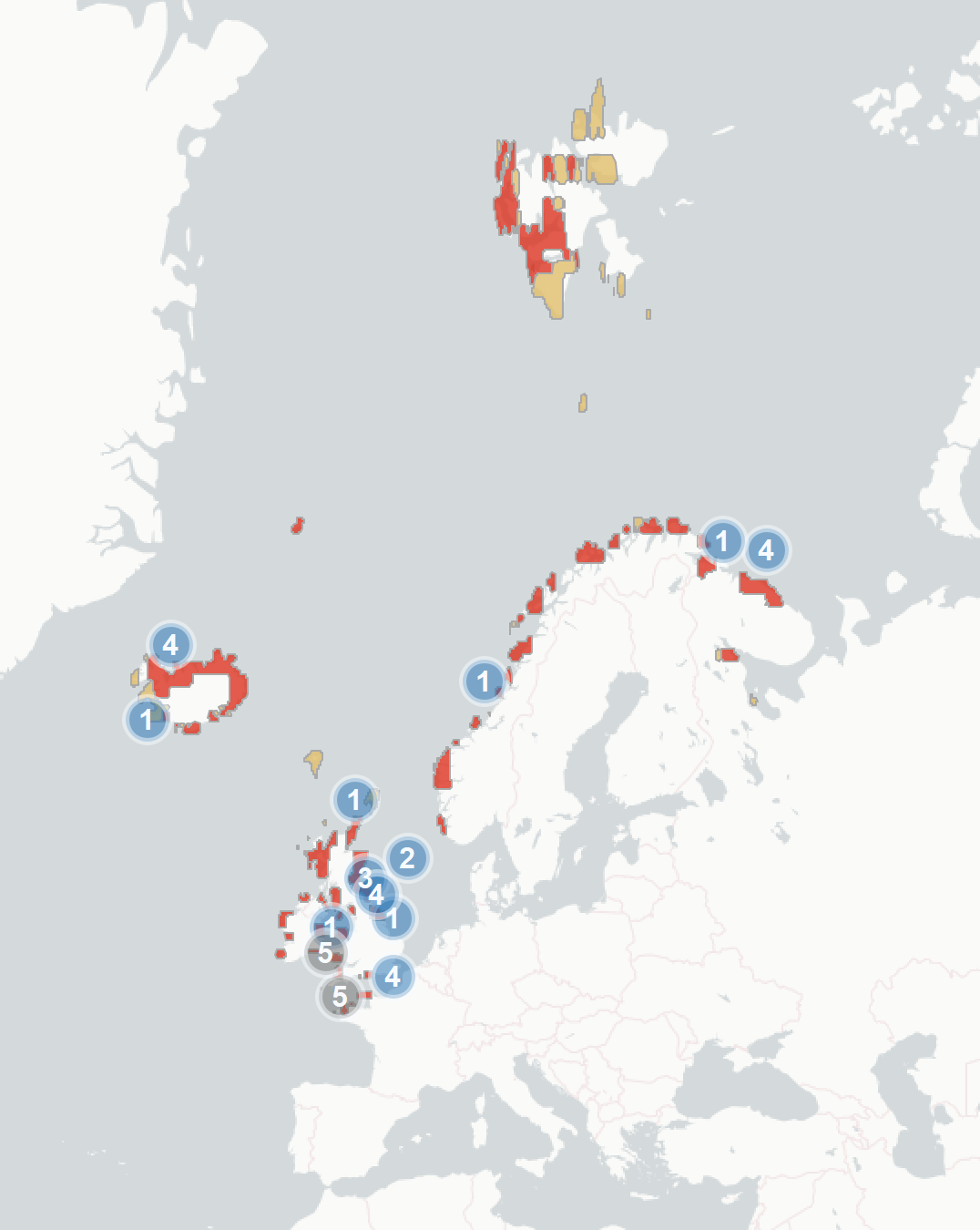Atlantic Puffin (Fratercula arctica): vulnerability to climate change
Evidence for exposure
Potential changes in breeding habitat suitability:
-
Current breeding area that is likely to become less suitable (68% of current range)
-
Current breeding area that is likely to remain suitable (31%)
-
Current breeding area that is likely to become more suitable (1%)
Current impacts to Atlantic Puffins attributed to climate change:
-
Negative Impact: Changes in puffins’ prey availability during breeding season has led to decreased breeding success
-
Negative Impact: Changes in puffins’ prey availability during non-breeding season has led to increased mortality
-
Negative Impact: Changes in vegetation has led to fewer suitable puffin nest-sites
-
Negative Impact: Extreme storms during the non-breeding season have led to mass-mortality of puffins (‘wrecks’)
Predicted changes in key prey species:
-
Key prey species are likely to decline in abundance in the Irish Sea and the English Channel
Climate change impacts outside of Europe
-
Some colonies in North America have changed their laying phenology, presumably in response to temperature and/or prey availability. Some recent observations have reported this has also occurred in Europe.
Sensitivity
-
Puffins are prone to population crashes, typically either from lack of prey during the breeding season or the effects of winter storms. This makes drastic populations reductions more likely, as well as result in long recovery periods.
-
Adult puffin survival can drop sharply when there is an increase in the frequency, duration and intensity of winter storms, most likely due to increased foraging difficulty. Note: there is conflicting evidence regarding the effect of storms on puffins. However, puffins in areas most prone to extreme weather are more likely to be severely affected.
-
Puffin colony success across Europe is correlated to copepod abundance, as they support many fish populations. In recent decades many areas in the south of the north-east Atlantic have become less suitable for copepods and this trend is likely to continue in the future. A decrease or range shift in copepods will likely have severe impacts on seabird colonies in the north-east Atlantic.
-
This species has a long generation length (>10 years), which may slow recovery from severe impacts and increases population extinction risk
-
Puffins are declining rapidly in many parts of Europe, which has most major populations globally. Any additional pressure from climate change is likely to accelerate these declines.
Adaptive capacity
-
Puffins travel long distances and could theoretically reach areas suitable for new colonies. However, while there have been examples of puffins colonising new areas (with or without human assistance), in general they have high site fidelity and rarely colonise new areas.
-
Recent observations of puffins in Iceland report that puffins have started to swap prey species at some colonies, especially where major prey species have declined. The extent of this switch and the consequences are currently unknown.
-
Colonies of puffins on Farne Islands and on Isle of May are breeding later, but not in correlation to changes in sea temperature. This may be due to other environmental changes in breeding or non-breeding areas. While this shift may be adaptive, it may also result in trophic mismatch if breeding cues don’t match prey availability.
